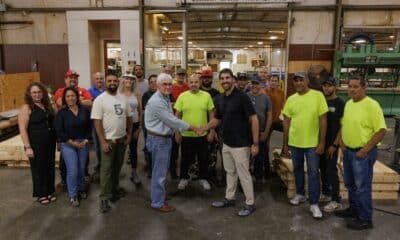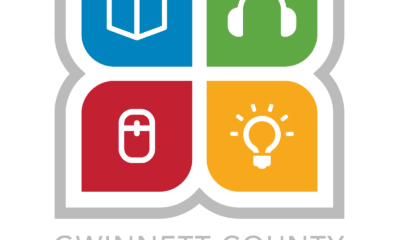Arts & Literature
Mayra Cuevas, Author of YA novel Salty, Bitter, Sweet, talks about writing and diversity in literature [Podcast]
Published
5 years agoon
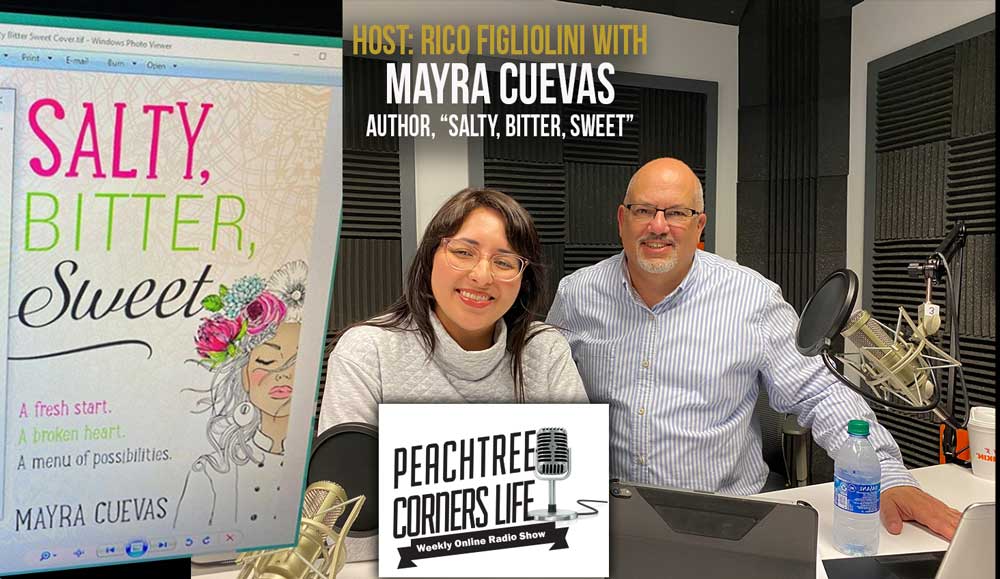
Want to learn what it takes to write a Young Adult novel that showcases diversity, characters that find success on their own terms and written by a person of color? YA novelist Mayra Cuevas debut novel is “Swalty, Bitter, Sweet.” Join host Rico Figliolini and Mayra as they discuss inspirations and writing methods that went into this fantastic book, her Puerto Rican heritage and her own family’s experience with divorce, grief, new beginnings and the healing power of food made with love.
“So one of the themes in the book is about finding success in your own terms. So a lot of times, and I didn’t discover this until later in life. But we try to measure our success through the benchmark of others that others have set for us, right? So others’ ideas of our own success. And then we realized after a long time that that doesn’t make us happy because that’s not really what we want. What we want is something else. It’s our own journey.”
mAYRA cUEVAS
Timestamp – where to find these topics in the podcast
[00:00:30] – Intro
[00:03:05] – Book talks and Publisher Info
[00:03:34] – Title Origin
[00:04:38] – Manuscripts, Rejections, and Success [00:08:28] – Story and Character Inspiration
[00:11:17] – Location and Cooking Influences
[00:14:29] – Mayra’s Writing Process
[00:20:51] – More on Characters and Locations
[00:22:18] – Empowering Young Women
[00:25:10] – Diversity in Young Adult Books
[00:29:05] – About Mayra
[00:33:46] – Cowriting
[00:35:26] – Beta Reading
[00:39:55] – How to finish a book
Podcast Transcript:
Rico: [00:00:30] Hi everyone. This is Rico Figliolini, host of Peachtree Corners Life. This is a Thursday afternoon on a stormy day. We had tornado watches today, but everything’s sort of calmed down this afternoon, and we have a special guest, local author and CNN producer Mayra Cuevas. So she’s, she has a book I want to talk about and I want to talk about her life a bit, but before we get into that, I just want to say thanks to a few people and our lead sponsor. So we’re here at Atlanta Tech Park in the City of Peachtree Corners at the Tech Park, it’s right on the road. That’s Curiosity Labs at Peachtree Corners. It’s a place that houses 70 companies over 15,000 square feet. This podcast studio, of course, and it’s a hub for business and tech and Curiosity Lab itself. The one and a half mile track that we sit on is something that the city itself is putting together, has put together to run and attract companies here to do experiments on a live laboratory, if you will, out there interacting with real traffic, real people where they can research and use their internet of everything. Items, apps, plugins to the autonomous vehicles that run on this track and such. So it’s a tremendous, living lab here that, does a lot of impact for the cities, for us economic impact. Our lead sponsor is Hargray Fiber. They’re a company based out of Hilton Heaven, Savannah, Georgia. They are a company that crafts customized solutions for hundreds of businesses in the Southeast. Whether you’re a small business looking for bundled services or you’re a low on enterprise level business looking for a managed IT services, either voiceover, internet, TV. Well that they can provide a real customized solution for you. They are a local company. They don’t let the cable guy, they will show up and they will really do the right things. And I got to say also with the city of Peachtree Corners, Hargray Fiber, even though it was sitting on what really is a mobility wireless 5G driven track. The backbone of it is still fiber and Hargray Fiber is the company that put the fiber here, and they’re the backbone of what the city’s doing. We’ll be here, so if you want to find out more information, go to HargrayFiber.com now. Now we’re really getting into the, the meat of the meeting, if you will. So there’s a lot of things I want to talk about. I had seen on Norcross high school that you’re going to be doing a discussion there and, in a few days again, so a few weeks.
Mayra: [00:03:05] Yeah, I’m actually doing several visits to local schools. North Gwinnett high, Norcross high school and Duluth as well. And I got book talks lined up, different parts of the country in Tennessee, New York and Arkansas.
Rico: [00:03:22] Wow. And who’s the publisher of the book?
Mayra: [00:03:25] It’s Blank HarperCollins.
Rico: [00:03:28] Blank HarperCollins. Now this is a novel that you put together called…
Mayra: [00:03:32] Salty, Bitter, Sweet.
Rico: [00:03:34] And I’ve been wanting to ask how that name came about. But it what is the story?
Mayra: [00:03:40] It was originally called “Every Girl Should Have a Blow Torch” because food is very much at the center of the book. And my, my lead character Isa, she loves using a blowtorch to kinda, you know, work, work on her desserts and then there’s a really funny incident with the Isa and the love interest in which they set the kitchen on fire using like, wrestling over the blow torch. But the publisher ultimately decides what the title is going to be. And the marketing team came up with this awesome title; “Salty, Bitter, Sweet,” which I love, and everyone loves. And I think it’s very appropriate for the book.
Rico: [00:04:27] It’s all about taste and food and texture and all that. I can imagine the other one’s a little bit more edgy.
Mayra: [00:04:35] Yes, it was more edgy. But the lines stayed in the book.
Rico: [00:04:38] Yeah. I could see him walking around with the little torch. So you can, this is your first book actually, isn’t it?
Mayra: [00:04:44] Yeah, so it’s my first published book. It’s not my first manuscript. I have been working on getting published for about six years now, and I have written other manuscripts. I had an agent that actually picked me up and he’s representing me based on a, on a previous manuscript, but this was the first manuscript that actually went out and sold.
Rico: [00:05:03] So you got that agent because of the original manuscript and then he saw the others?
Mayra: [00:05:08] Yes. So I mean, this is one of the things that a lot of, it’s not really talked about that much in the publishing process. So many times I knew the debut authors, you read their stuff and it’s like, Oh, this is actually really good for a debut author. Well, that’s probably not their first manuscript. It’s just the first manuscript that sold and that found a home at one of the big publishers. In my case, I really want it to be published in one of the big five. HarperCollins is part of that group. So I was, I was very proud and really happy to make that happen.
Rico: [00:05:42] Would you say this was your third, fourth, or fifth manuscript?
Mayra: [00:05:45] This was my third manuscript. Yes, it was my third manuscript. The first one was a fantasy novel that will never see the light of day because it was just absolutely awful. But at the time, I thought it was the most amazing thing written since Harry Potter, and it got about 200 rejections, but I kept going. And then I did, I, it was, it was my first manuscript and it taught me a lot about the writing process and about the publishing industry as well. And then I wrote a second manuscript that was a camp story, and that was the one that my agent decided to represent me. And then Salty, Bitter, Sweet.
Rico: [00:06:31] So when you did the 200 rejections on the first, you said let me set that aside and write a different one.
Mayra: [00:06:37] You have to move on at some point. And I think 200 rejections is a good place to move on.
Rico: [00:06:43] Who knows, it might get picked up later. But so your second book, you finished. And then you went on anyway to write your third manuscript.
Mayra: [00:06:52] Yes. So for me, you know, you kind of set goals for yourself as a writer, right? And for me, my goal is to put out one manuscript a year. Like I usually, and I have been pretty consistent with this. Like right now I have another manuscript that will potentially go out on submission to publishers in the next couple of months. It’s getting polished.
Rico: [00:07:14] Is this the fourth one?
Mayra: [00:07:15] No, it’s actually the fifth, the fifth manuscript that I’ve written. Yeah. I have the fourth I’m still working on this and it needs some more polishing. It’s also why I love writing for teens and young adults, especially for, for teen girls. Because I, it’s a very important time in their lives. It’s a time where they’re trying to figure out what their view, they’re forming the view of their world, right? And it’s a time of insecurity. It’s a time of lots of changes and just, just difficult things going on in your life. And it’s wonderful to have a voice of empowerment in the background of you know me, like I’m almost 40. I’ve been through that stage in my life. I’ve kinda, I’ve lived through it, you know, I’m on the other side of it and I, I have some perspective now I can look back and say, you know what? These things that you’re struggling with in the grand scheme of things are not that big of a deal. You know, it’s going to be fine.
Rico: [00:08:26] But you don’t say that in the novel necessarily, or have the adults in the novel say that.
Mayra: [00:08:28] No, because it’s like you gotta the beauty about writing for young adults is having these amazing characters who are discovering these things for themselves. You know, just, they’re going on this life journey. You know, like my character Isa, she’s dealing with her grandmother, who is her culinary muse, has just passed away. And not only that, but she’s also, her grandmother is Cuban, so she identifies, she sees herself in her grandmother, her Latina side, right? Her parents have just gotten a divorce and his dad is living with another person. And this is something I went through at that age. My parents went through a very difficult divorce. You know, I relied a lot on my grandparents to, you know, to nourish myself emotionally and, and, and mentally. And I’m, I’m writing from that point of view.
Rico: [00:09:31] And I was going to be one of my questions as well. The, you know, how do you, do you come to this with some of the experiences, obviously with the divorce in your family and stuff, but also, I mean, you’re bringing it from, the, you know, from the experience that you, that you have from being a Puerto Rican, maybe Latino. So, and being a woman and writing from a woman’s point of view, obviously. But you are also like a mom to two step sons.
Mayra: [00:10:04] Yes, two amazing stepsons. You know, they inspired, both of them, they want to know which one is the one that’s in the book.The guys have asked me and said, is it me? Is it me? And I’m like, well, it’s a combination of the both of you and it’s true. You know, I used them to kind of model the romantic interest in the book because you know, they’re right there, so it’s just so easy.
Rico: [00:10:32] Yeah, that is so funny. Are they okay with that?
Mayra: [00:10:33] They’re fine. They’re very supportive of me. They’re actually coming for the book event on February 29th.
Rico: [00:10:41] That’s so funny. I mean, some of the kids might, depending on who’s there, they might be, are you him?
Mayra: [00:10:47] Diego. Diego is a romantic interest. Yeah.
Rico: [00:10:51] And you know, I mean, as I was reading through the school library journal review, because the book’s not out yet. The book is going to be out on…
Mayra: [00:10:59] Yes, it’s out on March 3rd. But, everyone can preorder and preorders are awesome. Barnes and Noble, Amazon, even we have Little Shop of Stories or Curious Books here in town. They’re also, yes. Anywhere where they sell books.
Rico: [00:11:17] So you placed this, this is actually placed in Europe.
Mayra: [00:11:21] So the story takes place and is, there’s multiple locations in the book. The bulk of the story takes place in Leon France. And there’s a reason for that. It’s that Leon friends is actually the gastronomic capital of the world. And here you have a girl who wants to be a chef more than anything. She believes her happiness and the way that she gives herself to others is in food. And to place her at the epicenter of, you know, food and the entire world. It was just a way to raise the stakes just a little bit more, you know,
Rico: [00:11:57] Not only that, but she goes to school of this top cook. And the reward is to get your own restaurant, essentially.
Mayra: [00:12:03] You get to apprentice, so you get to learn from one of the, the, at the end of the program that she’s in, that she’s competing for a spot at a kitchen of a three Michelin star chef, and he’s not only a three Michelin star chef, he’s a legend in, in the high cuisine.
Rico: [00:12:25] You have to be. That’s funny. So, but research. I mean…
Mayra: [00:12:30] Did a lot of research. Yes.
Rico: [00:12:32] Are you a good cook too?
Mayra: [00:12:33] I love to cook. And you know, that’s one of the reasons why I chose to do a foodie book, you know, is because I love food, in my family and a lot of Latino households, food is a way to connect. It’s a way to bring us together. And your, your background’s Italian, so you know, same thing.
Rico: [00:12:57] Yes. Three hours dinners and all that.
Mayra: [00:12:58] But it is a time when we come together and it’s a time of nourishing. It’s a time of love. And it’s also, food is a vehicle for memories. You know? And like a lot of, you know, the memories that I have growing up of my grandparents are associated with specific dishes, you know? It’s like, I mean, I still remember the sense, the taste, you know. The you know, the crackling of fried chicken, you know. And, and also moments, specific moments in time that. Are associated with a certain type of meal, you know. So for Isa, for the main character, like she’s connecting with her grandmother, even though her grandmother had passed, has passed away through the meals she’s preparing. And all of these memories are coming together through food and the love that she wants to give to her family and the world. She wants to give of herself to the world through food.
Rico: [00:13:59] That’s when there reminds me of my wife and my mother in a way, because I would remember when she, on Saturday morning, Sunday morning, she would do the sauce and the first thing that went in all the time was the chopped onion and the sizzling. And you’d hear that and smell it and those, those scents would come back to you later.
Mayra: [00:14:18] Yes.
Rico: [00:14:19] And of course…
Mayra: [00:14:20] They’re heartfelt, you’re, you’re, you have a physical reaction to the smells, the sounds, the tastes.
Rico: [00:14:29] And on the cook side, cause my wife likes to cook too. She’d be like, if she spent an hour, two hours cooking, putting together the meal, she actually wouldn’t eat after that because she’s done. She’s put everything into that meal and that’s it. You guys have dinner. I’m good. So yeah. So it’s a different way of seeing that. So, you know, I love YA novels too. My kids, I have three kids. They grew up on Harry Potter, they grew up all the YA novels you can think of. They read through and of course, you know, Fault in Our Stars, I mean, a whole bunch of them. And we would sometimes share our recommendations back and forth. And I’m sure that your book would probably be key to my daughter. She’d probably love that I bet. So the writing part, let’s get back to the writing process because that always interests me. How do you, because everyone’s different. Every writer says the different, they some need to do three pages
a day, some need to do four hours, then it doesn’t matter if they produce nothing. Some people need a quiet, they need to shut the door. They won’t open that door until they’re done with the manuscript and won’t show it to anyone. So tell me your process.
Mayra: [00:15:35] So, I tend to be very practical with my writing because I don’t have a lot of time. I have a full time job and I also have other responsibilities. I sit on the board of a Kadampa Meditation Center, Georgia in Inman park. and sometimes I teach meditation as well. So I’m, I have a very busy life. So when I do sit to write, it’s got to be a quality writing. So when I have, when I have an idea for a new project, I’ll come up with an idea. I have a series of questions that I’ll ask myself to develop that idea and see if that idea is viable. If, if the idea we’ll, it can stretch into a whole book, because writing a novel is not just an artistic thing a creative thing. It’s also a very technical thing. A novel has to have certain parts. It has to hit certain points. Your character needs to go through a journey that is very defined. So for me, when I start, I like to see all that plotted out at first, I’m on what they call a plotter, not a pantser. So pantsers kind of just start writing and then whatever comes, comes. I, my approach is a little bit different. So I, I try to plot out the whole book at first and I use that as a guide. Things ultimately change from, cause, you know, the characters kind of start telling you where they want to go. They’re alive, much alive and hanging out inside my head. And then your new characters develop, you know, Lala, the grandmother in Salty, Bitter, Sweet. She didn’t develop until like, the third draft of the book. She wasn’t in the original story.
Rico: [00:17:20] She seems to be like the holding there.
Mayra: [00:17:22] Because when she came to me, she came fully formed. But you know, she wasn’t there originally. And that happens a lot. There’s, there’s a lot of characters. Sometimes you, you know, one of the manuscripts that I’m working on right now, I am struggling with one of the characters and I can’t get them together, but others just come fully formed. They just show up and then you write them and they’re perfect from day one, you know?
Rico: [00:17:48] So yeah, you’re a plotter, but do you actually create an outline like chapter by chapter along?
Mayra: [00:17:53] Yes, and there’s a couple of reasons why I do that. One, is because at the point where I’m at right now, I need to discuss it with my agent. And then the second one is, you usually, once you sell the book, there’s potential to sell other books on spec and by contract that requires plotting chapter by chapter, then they need to know what your, what they’re buying. Pretty much.
Rico: [00:18:17] Okay. Unless you’re doing a trilogy and even with that you probably have to do that, I bet.
Mayra: [00:18:21] Even with whatever, whatever you sell that the publishers just then just want to know what they’re buying.
Rico: [00:18:28] So I saw an outline that James Patterson did. His is one paragraph per chapter. Is yours similar?
Mayra: [00:18:35] Yeah, mine are a little. That’s a chapter by chapter outline is very good. That’s pretty much a, you just give us a short synopsis of what’s in every chapter,
Rico: [00:18:45] and that’s what you write. So you’re writing, you’re sitting down that day and you’re going to write that chapter.
Mayra: [00:18:50] Yes. But again, it is. It’s an idea, right? These, these, these are just ideas. But when you’re writing, that’s where the creative side comes in. And things just start changing. Sometimes they move in completely different directions that you didn’t expect, and your characters just want to do what they want to do. And you’re, you know, and so you’re taking that outline, but you’re being flexible around it. You know, you’re not…
Rico: [00:19:20] You’re not held to it.
Mayra: [00:19:21] No, you gotta. Exactly. You can get, it’s very organic. It’s a very organic process. I just, I just like to give it a little push in a certain direction.
Rico: [00:19:31] Did you ever have to go back a few chapters and say, okay, my character took me here, but I need to adjust the foreshadowing. I need to do a few things back here.
Mayra: [00:19:40] So normally I write forward and then what that means is that I will write all the way to the end of the book because I want to know where the characters are taking me and then how the book is going to end, and then I will go back and make changes. I usually…
Rico: [00:19:55] So your first draft is all the way through.
Mayra: [00:19:57] Yes. My first draft is always all the way through. Because what I found out is like if you kind of stop and go, stop and go, you will edit yourself until oblivion. And then you just, you know, you just keep going back and there’s no point because until you get to the end of the story, you just don’t know how the story’s going to end. You know?
Rico: [00:20:17] Do you ever write like character profiles? You do write those down?
Mayra: [00:20:21] Yes. I’ve done that several times because, especially in young adult, the genre is very character-driven. And what that means is like, you want very dynamic characters that pop off the page. They’re very memorable, that, that have something to say, you know. So, so it’s nice to develop that, with a character sketch to help you kind of pull out some of those very tangible things that they later you’re going to develop throughout the story.
Rico: [00:20:51] I have to ask you, so when the characters take over and they start writing, do they ever like break that, that profile? No, you would never do this?
Mayra: [00:20:59] All the time. You know, once you go. So let me go back to the example of Isa because this book, it’s changed.
Rico: [00:21:08] She sounds like a great character.
Mayra: [00:21:09] She is, but she started out, Isa started out as this complete French girl who was leaving New York. I mean, and she has changed. She just, when I started writing her, the idea that I had of her is completely different with what she ended up being. Because, they characters are like real people, you know, and they should be like real people. They’re complex individuals. They have their history to them. They speak in their own voice. You know, they’re, yeah. They’re true to life.
Rico: [00:21:45] The best characters. Leon France, have you been there?
Mayra: [00:21:49] I’ve been to several areas in France. Have not been to Leon. It’s on my list of places that I want to go, but I did a lot of research to get it right. And I did have a French consultant look at the book. Yeah, I actually had a consultant for the French aspects of the novel and also for the culinary aspects of the novel. Chef Carla from Buck and Alia. She’s an executive pastry chef, and she served as a consultant in the book.
Rico: [00:22:18] Now, obviously the main character is a girl, and we talked about, you know, empowering girls is one of the things you want to be able to do. So tell me a little bit about that. What was the, you know, was that important? I mean, I have a daughter too, I can understand why, but like to hear your words on it.
Mayra: [00:22:35] So one, one of the themes in the book is about finding success in your own terms. So a lot of times, and I didn’t discover this until later in life. But we try to measure our success through the benchmark of others that others have set for us, right? So others ideas of our own success. And then we realized after a long time that that doesn’t make us happy because that’s not really what we want. What we want is something else. It’s our own journey, right? So Isa needs to go, she thinks that what she wants is to be in this very stressful environment with a male dominated kitchen that the entire world says, you have reached the peak of your career at where you’re at in life, right? This is, it’s heartache, cuisine, you’re going to be training under you know, this culinary legend. And when she gets there, she realized this, this, this is not making me happy. I don’t, you know, I feel miserable here. Like it’s stressful as all hell, you know? It’s not what she thought she was, but then the struggle becomes, okay, but I’ve gotten here. Do I want to stay and kind of just suck it up? But you know, and that’s, that’s us adults. We do that many of the times, you know, we do that at work. We do that in relationships, and we do that in many stages of, of many different places of our lives. So the decision comes
whether, you know, she wants to, she’s already sacrificed so many aspects of her life to get here, but now that she’s gotten here, she realizes that she’s not happy. So what does she do?
Rico: [00:24:25] What does she do? Well she has other complications, obviously. Her grandmother passed away, divorce.
Mayra: [00:24:30] Isa has put everything on the line, everything, everything. Everything that she is to get to this place.
Rico: [00:24:36] And a boy comes into her life also?
Mayra: [00:24:38] To mess things up, to screw up her plans. So the world is conspiring against her, right? So, but yeah, I want to empower girls to think about their goals as, as something that they can achieve on their own terms that they, they can set the bar, they can decide what they want. What does that mean for them versus relying on other people to set the bar for success.
Rico: [00:25:10] Which makes sense. I think that’s what we all want to be able to be happy with our own things, boy or girl. We’ve talked about a little bit also, diversity in Young Adult books. So do you want to speak to that as well?
Mayra: [00:25:22] So the topic of diversity is very important for me. I was born and raised in Puerto Rico. I’m a Latino woman. I love romantic comedies, love, love romantic comedies. And, but what I struggle with is seeing myself in a romantic comedy. You know, other than movies with, like Jennifer Lopez being the star. It’s rare to find a romantic comedy, you know, film or in books with a Latina main character. So I wanted to give girls, especially Latina girls, an opportunity to see themselves as the lead in their own story, right? They’re the lead in their own life and have a vision for that they can be the main character. Another thing that’s always playing in the background in my mind as I’m writing, is that only 5% of all kids books published present a Latina, Latin character. Of those 5%, only 34% are written by Latin writers or illustrators. Meanwhile, in schools, 22% of the kids are Latin in classrooms, in public schools in the US so just the numbers just don’t add up there. There needs to be more books represented, marginalized communities, written by people of color.
Rico: [00:26:53] So is that promoting, like I always look at things like that as I’m, being Italian, Italian heritage and coming from New York and Brooklyn and coming South and, you know, tell people my name is Rico moved down here in 95. People are like Rico Lopez? Rico Petrocelli? It’s like, no, just Rico’s fine. People are funny that way about diversity, when they don’t see it. But also, you know, I think we have to, maybe we have to, like you are doing encourage a talent to be able to write those books because it really, there’s just a lack of talent out there, right? To some degree.
Mayra: [00:27:38] The publishing industry is 80% white. So, and that is something that has come to the forefront now with this whole debacle with American Dirt, with the novel American
Dirt. So it’s, you know, if we want to promote more books written by marginalized communities, by people of color, we have to publish more of these books, right? That we need to give everybody a seat at the table. And not only a seat at the table, but given the same opportunities that white authors are given in terms of publicity or promotion or promoting the books and all that stuff. Atlanta, thankfully Atlanta has an incredible young adult, very diverse young adult community, you know. We have, so I mean, we have, Aisha Saaed who writes from a Muslim perspective. We have Nick Stone who writes from the African American perspective. We have Beckel Bertolli who writes from the Jewish perspective. It’s incredibly diverse. Just, you know, here alone in Atlanta, but we need to do a better job at lifting these voices.
Rico: [00:28:51] Are there any big, every time I think of publishers they’re in New York for some reason. Are there any Atlanta big publishers?
Mayra: [00:28:57] So the big five publishers who control most of the market are in New York.
Rico: [00:29:05] I mean you would think that we would have something big here but that’s not the case. So this has been a journey for you too, I mean, you come from Puerto Rico. When did you, when did you move here?
Mayra: [00:29:15] So I moved to Miami when I was 22 I got a scholarship. I know Florida international university to do a master’s in investigative reporting. And after I completed my masters, I moved here to Atlanta. I got a job, doing investigative reporting for WSB TV, the NBC affiliate here in Atlanta. And then after a year doing that, I moved to Sienna and so I’ve been in Sienna for more than 15 years now.
Rico: [00:29:40] 15 years wow. Yeah. That’s cool. I mean, CNN is going through its things though. I have a friend that works in, I think he’s been through three waves of downsizing or something like that.
Mayra: [00:29:50] It’s a great place to work. My colleagues are amazing.
Rico: [00:29:56] So journalism is still something you want to do, even if you become successful writing? Continued success?
Mayra: [00:30:02] If that happens, we’ll have to revisit the conversation.
Rico: [00:30:08] Yes, writing. Anyone that wants to be a writer, though, that’d be a great living. You know?
Mayra: [00:30:15] It’s not. Yeah well, I mean, the reality is the, the writers that hit it big and get, you know, seven figure contracts they’re rare. Most, most of the writers that I know have jobs. Are or they do other, other things to kind of compliment their income. Yeah, don’t quit your day job.
Rico: [00:30:44] No you don’t want to do that. But at least you’d, some of them actually do. So I know a couple of two sisters that they do a lot of editing and ghostwriting, so at least they’re still working their craft to some degree. Journalism is the same. So when you’re producing, are you, do you get something?
Mayra: [00:31:04] I do. So last year I traveled about 30% of the year. And well I got gas covering a protest in Puerto Rico. That was exciting. In my own, in like my own backyard. I went to like get gas, buy like these gas canisters out there, run all over. But no, it wasn’t. Most of the work that I’m doing now, there was a time that I did a lot of breaking news, but most of the time that I do now, is features highlighting amazing things that, that people are doing around the US.
Rico: [00:31:38] Do you ever get to speak to any authors? Other authors?
Mayra: [00:31:41] Well, you know, I am surrounded in Atlanta. I am surrounded by a group of amazing authors and a community of my amazing authors. Thankfully my writing partner, Mary Marquardt and I formed this group called Mingle and Margarita’s and we meet, yeah, we meet up. It’s a writing community and we meet twice a year to come together and talk about different things that authors and writers are interested about. And also, I belong to a group called Las Musas. It’s a Latin, Latina authors collective. And there’s about, right now, there’s between 40 and 50 of us, and these are all authors whose books are coming out in the next couple of years, and, you know, we connect with each other. We pitch panels at conferences, you know, and support each other.
Rico: [00:32:35] Do you, do you foresee Salty, Bitter and Sweet becoming maybe a movie or?
Mayra: [00:32:43] I hope so. Fingers crossed if there’s anybody from Netflix listening to this. Like, just give me a call.
Rico: [00:32:57] This would actually be a great Netflix movie, I could see that. And you’re also doing international women’s day panel books and all that.
Mayra: [00:33:00] I’m super excited about that event. It’s gonna, it’s gonna be so much fun and a great conversation. It’s on Sunday, March 8th at 3:00 PM at the Norcross community center. And it’s going to be moderated by a CNN anchor, Christy Paul. She’s also an amazing women’s advocate. And then, Marie Marquardt, who I just, I just co-wrote a manuscript with her. It’s about to go on submission. Yes, it’s a nice little feminist, we call it the feminist unicorn. Yeah, so we’re going to be on the panel talking about stories that empower girls and women.
Rico: [00:33:46] Do you like the co-writing? Is that different? How do you do that?
Mayra: [00:33:49] So that was so much fun. So, Maria and I have been working together for about six years. We started off as critique partners. So, you know, we were talking about my
writing process. Maria and I exchange chapters of the stuff we’ve written and she critiques my chapters and I critiqued hers. So we’d been doing this for a while. And then finally we’ve been talking about, writing a book, a book together, but it kind of worked on timing. She was on a contract. I was like working on my stuff, and finally we found this opening where she wasn’t on a contract and I had just sold my book and we could work on something together. So, yeah, we basically, I’m writing the Latina, one character from the Latina characters perspective. One chapter, and then she’s writing another chapter from the white girl’s perspective.
Rico: [00:34:43] So you are splitting that up chapter by chapter?
Mayra: [00:34:45] Yes. We split up the book chapter by chapter. Yes. You would think it was less work, but it’s not.
Rico: [00:34:55] No you’re picking it up. It’s almost like a writing prompt in a way. You’re picking up the last chapter. And what if your character takes it a different way?
Mayra: [00:35:02] Well, that’s, that’s where plotting comes in. We plot it. We actually sat down and plotted the whole book.
Rico: [00:35:08] All of sudden said, sorry, at the end of my chapter, this is where she’s at.
Mayra: [00:35:11] Because it’s interesting because even with this process, we had characters come out. Like, they just showed up. But you know, we just have to go with it. Cause it’s like this character just showed up. Cause we, you know, you don’t understand. That’s how the process works, right.
Rico: [00:35:26] People, I’m sure people listen to this and like they just pop up in your mind? Like, you know how does that work? Yeah. But, so she was like a beta reader for you. Do, do you do beta reading?
Mayra: [00:35:37] Yes, I do. I actually have a lot of beta readers.
Rico: [00:35:40] So beta readers are people that would read your book before it’s published like the manuscript.
Mayra: [00:35:43] Yes, give you insights and then they kind of let you know what’s working, what’s not working, what you need to fix. On top of beta readers, before Salty Bitter, Sweet came out, we also had, the publisher hired a sensitivity reader. So somebody to come in and say, hey, this can be seen as problematic. You need to work on this, fix that, that kind of thing.
Rico: [00:36:07] So beta readers your family, friends?
Mayra: [00:36:10] No, I try not to use my family or friends as beta readers because they sometimes then not to be very objective, you know, this is great and I don’t want to, yeah, I, you know, I want to hear, I want to know what doesn’t work. Like I need to fix what doesn’t work. So I usually use other authors and writers. Yeah.
Rico: [00:36:32] That’s funny. I was reading something about, the, the author that wrote the Martian and his beta readers were all online and I think it was for two years or a year. They were just feeding him stuff and they were all like techie geek guys that were collecting all this martian stuff. And he was like, if it wasn’t for that.
Mayra: [00:36:50] And you have to be open as a, as a writer, you have to be open to criticism because that’s how you get better and that’s how you improve.
Rico: [00:36:57] So that didn’t hurt if you heard?
Mayra: [00:36:57] No. The 200 rejections hurt. That hurt.
Rico: [00:37:02] I still can’t believe it was 200 times.
Mayra: [00:37:02] Yeah, my husband will attest. There were a couple of instances that I just, I just started crying and he’s like, you cannot cry every time you get a rejection.
Rico: [00:37:14] Now did you send them out one at a time. Did you bulk send any of them out?
Mayra: [00:37:16] Yeah, I did. I bulk sent them and I kept a spreadsheet with, you know, yeah with every single one.
Rico: [00:37:25] Did they include people that didn’t respond or people or they all responded, but rejected?
Mayra: [00:37:29] No. So what happens when you’re, when you’re trying to find an agent is a lot. There’s a couple of ways to go. So sometimes you can meet people at a conference and you can pitch your work in a conference and they’ll tell you if they want to read more or not. And other times you just, you do what’s called a cold query. So the agent says, Hey, I’m open for queries and this is what I’m looking for. And then you, if your manuscript fits that description, then you send them an email saying, Hey, this, I got this. Like, are you interested? And sometimes they just respond with a form letter or sometimes they request your stuff if they think it’s good and they liked it. And other times you never hear back.
Rico: [00:38:08] Did you ever get a rejection letter where they actually gave you some advice that was meaningful? Probably not.
Mayra: [00:38:15] Well, let me see. It was interesting when they actually requested to see the manuscript because it felt that I was close. That was like, okay, so they are interested in the story and, and they want to see what I have to say. So that was very encouraging. And I ultimately, I knew that whoever was gonna end up being my agent and she was just going to like it from day one and she was going to be excited about the book. I mean, from day one. And that’s exactly how it happened.
Rico: [00:38:48] Did that change a little bit through the editing process? I mean, did it have any major changes or?
Mayra: [00:38:55] Yes. I mean, it got, all books change. Like it’s like, When you, when you are writing to be published, and if you’re, if you’re serious about the craft of writing, you have to be open to edits. Because, books that, for example, the book that I’m working on right now, we are on our fourth round of edits. This is after the polished draft. So it’s gone to our agents back and forth, three, three or four times. and every time the book becomes stronger, and then now when the book goes to publisher and it gets acquired by a publisher, there’s going to be, again, numerous, numerous rounds of edits. So by the time Salty, Bitter, Sweet was ready to go to press, I think it had been edited probably between 30 and 40 times. Yeah. I didn’t like read through it, made changes that, that, that many times.
Rico: [00:39:55] Yeah. So what would you say to a young person that might be, that wants to write, they’re in high school, you’re going to be at Norcross High school at some point. What would you say to them if they said, you know, I write these profiles all the time. I haven’t really sat down to write. What would you say to them that they should do to get it done, to get the first book done regardless, good or bad, but just to finish it. Cause the right processes really it’s not a book until you finish it.
Mayra: [00:40:22] Yeah. Keep writing. You know, writing is one of those things that you learn by doing it. You know, you’re not, you’re not going to learn writing by sitting in a classroom. You know, you, you learn writing by actually sitting down, writing, getting your work critiqued and going back and editing. And then when you have gotten to that point with that particular manuscript that you just, I cannot do anything else with this. Then you move on and you write something else and you bring everything that you learned from that first manuscript into the second one and so on and so forth.
Rico: [00:40:55] It’s not surprising. It’s amazing to me. I mean, Stephen King, even, I think he wrote it by four or five manuscripts before Carrie got published. And, and then I think the Stand was one of those. But, yeah, these writers, it’s, I envy you guys. I’d love to do that, but, you know, it’s just like, it’s a struggle. I mean, to get it done.
Mayra: [00:41:18] I mean it is and it’s not. I love writing. I cannot imagine my life. Without writing. I mean, it just gives me such a sense of joy and a sense of purpose. And I love telling stories for me, something very meaningful. And the way, we, we grow as, as humans and as civilizations is
with our stories, by the stories that we pass on to one another. So story is incredibly important, in communities and humanity as a whole. Also, fiction specifically has so many benefits. it just, the main one. It just makes you happy, you know, it just, it makes you happy to read good fiction.
Rico: [00:42:04] Yeah. Makes you laugh, maybe sometimes, maybe even cry.
Mayra: [00:42:07] Yes, it does. And it gives you empathy. It builds, you know, studies have shown that it builds empathy with one another. And with our communities are so polarized right now that I think that is so important that we learn to see the world from somebody else’s point of view that, you know, we may not always have access to.
Rico: [00:42:28] Different perspectives.
Mayra: [00:42:29] Yes.
Rico: [00:42:30] Diversity also brings sometimes clarity to problems. Yes. That’s good. We’ve been speaking to Mayra Cuevas, who’s written her first published book, but not the first book in her repertoire and Salty, Bitter, Sweet. It’s going to be coming out in March.
Mayra: [00:42:46] It’s coming out March 3rd, we have a pre-release event of everybody’s welcome, invited to come. It’s going to be at the Decatur library, amphitheater. Friday, sorry, on Saturday, February 29th at 5:00 PM.
Rico: [00:43:02] And they can find more information about you or follow you on what or where?
Mayra: [00:43:06] Follow, well, the best place to go is my website. It’s MayraCuevas.com.
Rico: [00:43:11] All right, cool. Thank you. I appreciate you. Thank you so much.
Mayra: [00:43:15] It’s been great to be here. Thank you.
Rico: [00:43:17] Bye guys.
Related
Around Atlanta
City Springs Theatre Company Presents the Hit Musical Jersey Boys
Published
4 months agoon
July 3, 2024
The megahit musical Jersey Boys makes its regional premiere in City Springs Theatre Company’s (CSTC) first-ever, five-week run at the Byers Theatre in Sandy Springs.
Directed by Atlanta’s-own Shane DeLancey, and choreographed by Meg Gillentine, Jersey Boys tells the rags-to-riches story of Frankie Valli and The Four Seasons. The show details their remarkable journey from the streets to the top of the charts, to their 1990 induction into the Rock and Roll Hall of Fame.
Leading the cast of Jersey Boys is Haden Rider as Frankie Valli. Rider is a City Springs Theatre Company veteran, with recent roles in both Legally Blonde (Emmett) and Fiddler on the Roof (Perchik).
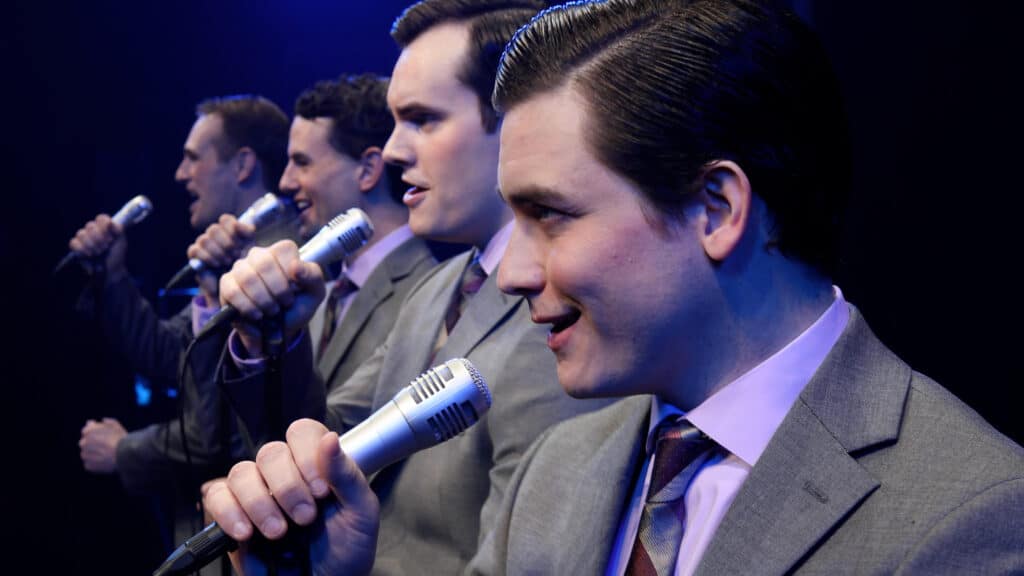
Presented by Resurgens Spine Center, Jersey Boys runs from July 12 through August 11, and shines a special spotlight on home-grown talent, as the show’s four leading men are all Atlanta-area residents.
With phenomenal music, memorable characters and great storytelling, Jersey Boys follows the fascinating evolution of four blue-collar kids who became one of the greatest successes in pop-music history.
“City Springs Theatre Company is very proud to be the first in the southeast region to present Jersey Boys,” said CSTC Artistic Director and Tony Award-winner Shuler Hensley. “Our audiences have been asking for this particular show since we opened. The production is truly stacked with talent onstage and off, and we’re pulling out all the stops to bring audiences an experience that will rival any previous version of the show.”
Jersey Boys premiered at the La Jolla Playhouse in 2005, prior to its 13-year Broadway run, from 2005 to 2017. There have been productions of the show in Las Vegas, UK/Ireland, Toronto, Melbourne, Singapore, South Africa, the Netherlands, Japan, Dubai and China.
Jersey Boys features a book by Marshall Brickman and Rick Elice, with music by Bob Gaudio, and lyrics by Bob Crewe.
Individual tickets to see Jersey Boys are on sale now ($42 – $108), with discounts for seniors, students, groups and active and retired military personnel.
CSTC’s Box Office is open Monday through Friday from 10:00 a.m. – 5:00 p.m.
Call 404-477-4365 or visit CitySpringsTheatre.com for more information.
This production contains adult language and is recommended for mature audiences.
Performance schedule:
Friday, July 12 | 8:00 p.m.
Saturday, July 13 | 2:00 p.m. & 8:00 p.m.
Sunday, July 14 | 2:00 p.m. & 7:30 p.m.
Tuesday, July 16 | 7:30 p.m.
Wednesday, July 17 | 7:30 p.m.
Thursday, July 18 | 8:00 p.m.
Friday, July 19 | 8:00 p.m.
Saturday, July 20 | 2:00 p.m. & 8:00 p.m.
Sunday, July 21 | 2:00 p.m. & 7:30 p.m.
Tuesday, July 23 | 7:30 p.m.
Wednesday, July 24 | 7:30 p.m.
Thursday, July 25 | 8:00 p.m.
Friday, July 26 | 8:00 p.m.
Saturday, July 27 | 2:00 p.m. & 8:00 p.m.
Sunday, July 28 | 2:00 p.m. & 7:30 p.m.
Tuesday, July 30 | 7:30 p.m.
Wednesday, July 31 | 7:30 p.m.
Thursday, August 1 | 8:00 p.m.
Friday, August 2 | 8:00 p.m.
Saturday, August 3 | 2:00 p.m. & 8:00 p.m.
Sunday, August 4 | 2:00 p.m. & 7:30 p.m.
Tuesday, August 6 | 7:30 p.m.
Wednesday, August 7 | 7:30 p.m.
Thursday, August 8 | 8:00 p.m.
Friday, August 9 | 8:00 p.m.
Saturday, August 10 | 2:00 p.m. & 8:00 p.m.
Sunday, August 11 | 2:00 p.m. & 7:30 p.m.
Related
Arts & Literature
Local Students Show Off Their Artistic Creations
Published
5 months agoon
June 2, 2024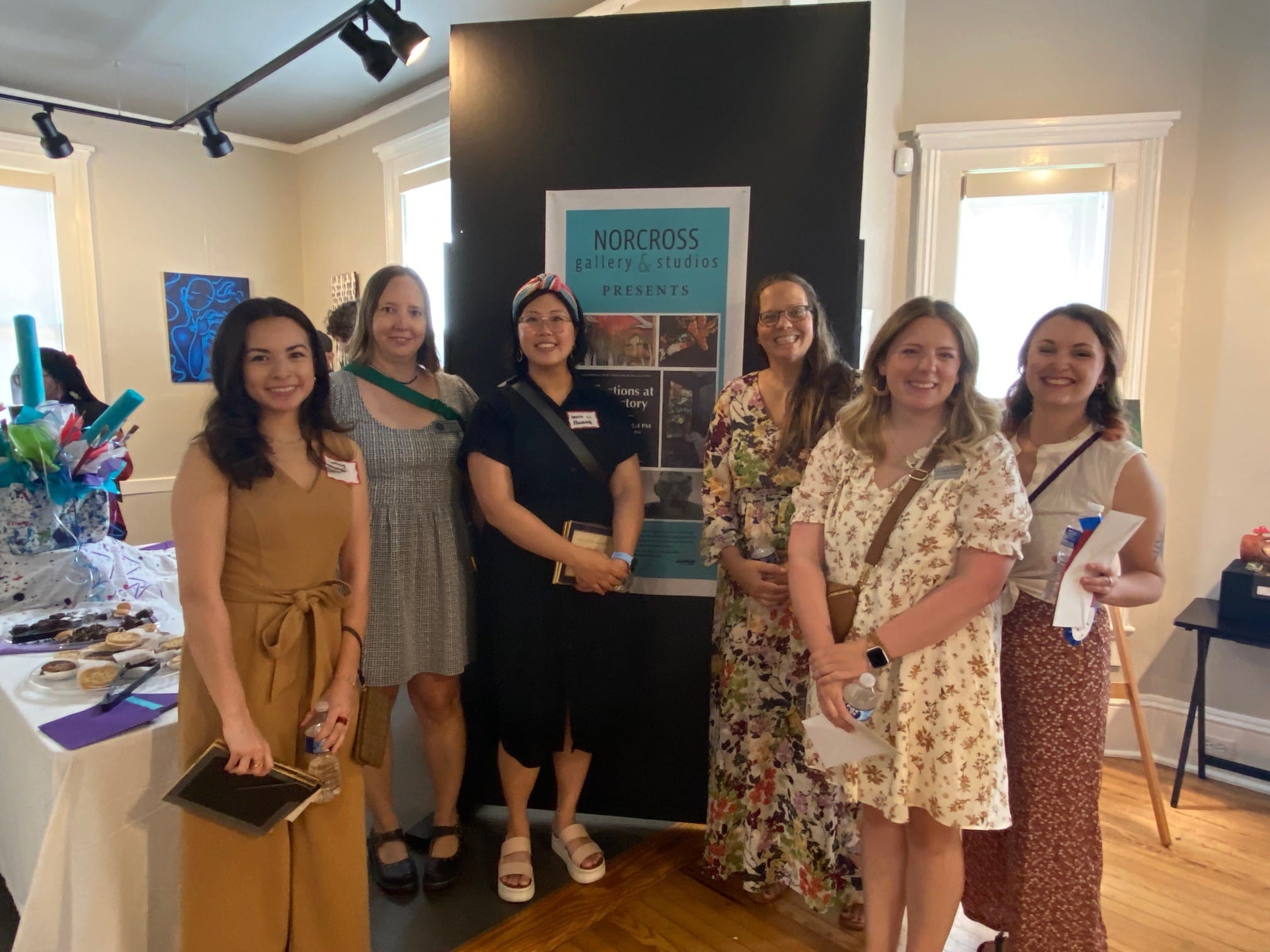
From May 11 through May 18, the Norcross Gallery & Studios kicked off a fantastic exhibition, Reflections at Rectory, which showcased the works of 36 rising stars: AP and IB art students from our local high schools.
The opening reception celebrated their creativity and dedication. Gallery director Anne Hall presented a dozen awards generously sponsored by the community, a testament to the local support for these young artists.
One prestigious award, the Terri Enfield Memorial Award, holds special significance.
Established by Terri’s daughters, it recognizes not just artistic excellence, but also leadership, work ethic and the spirit of collaboration. Last year’s winner, Aidan Ventimiglia, even played a part in selecting this year’s recipient Jasmine Rodriguez.
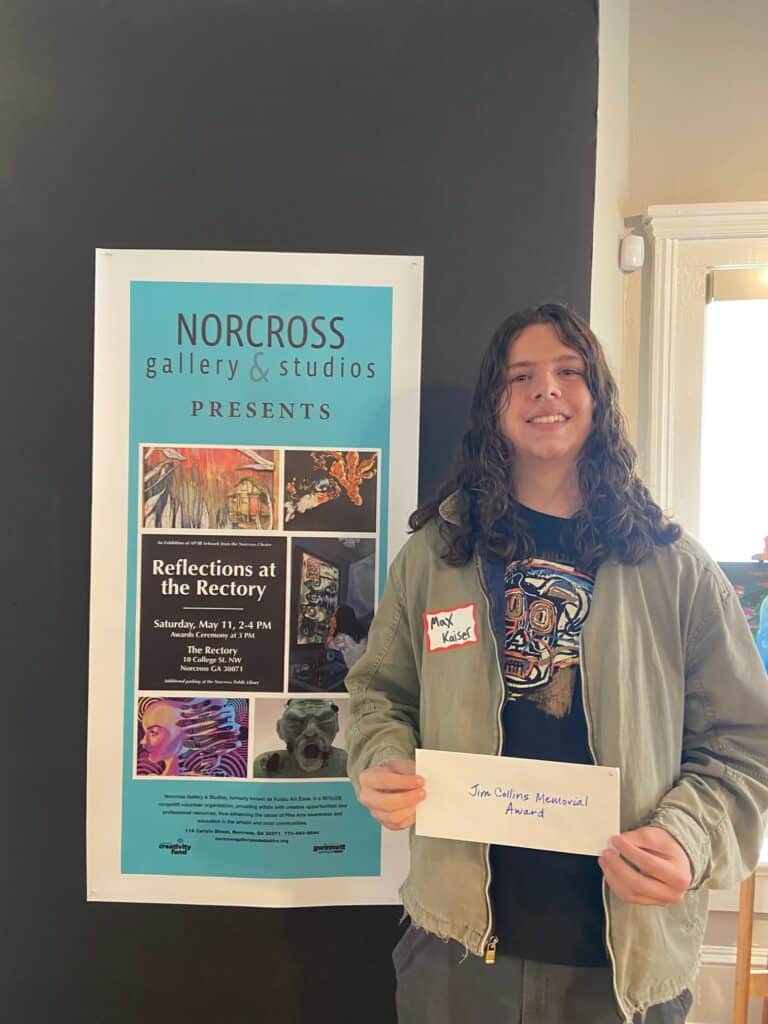
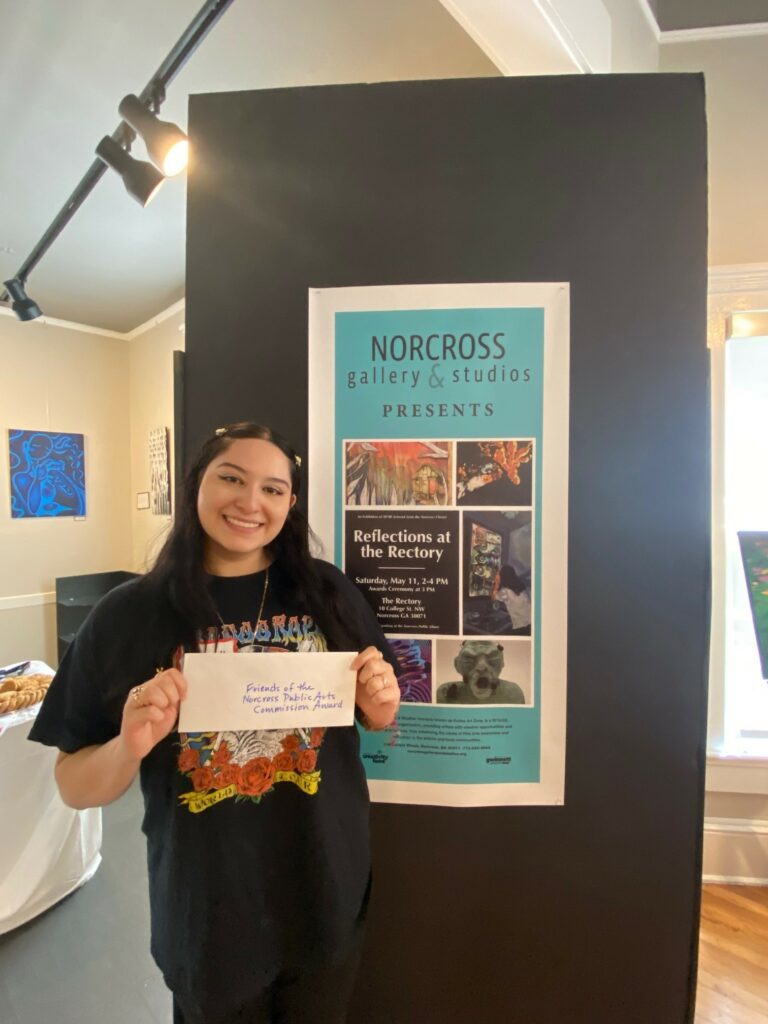
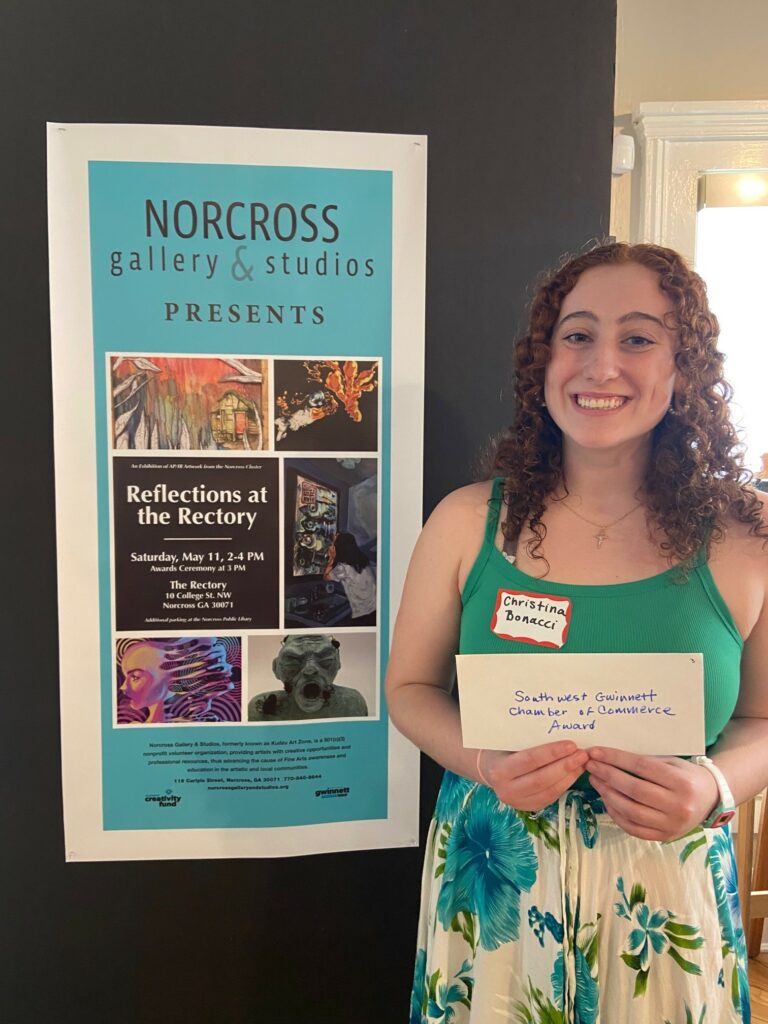
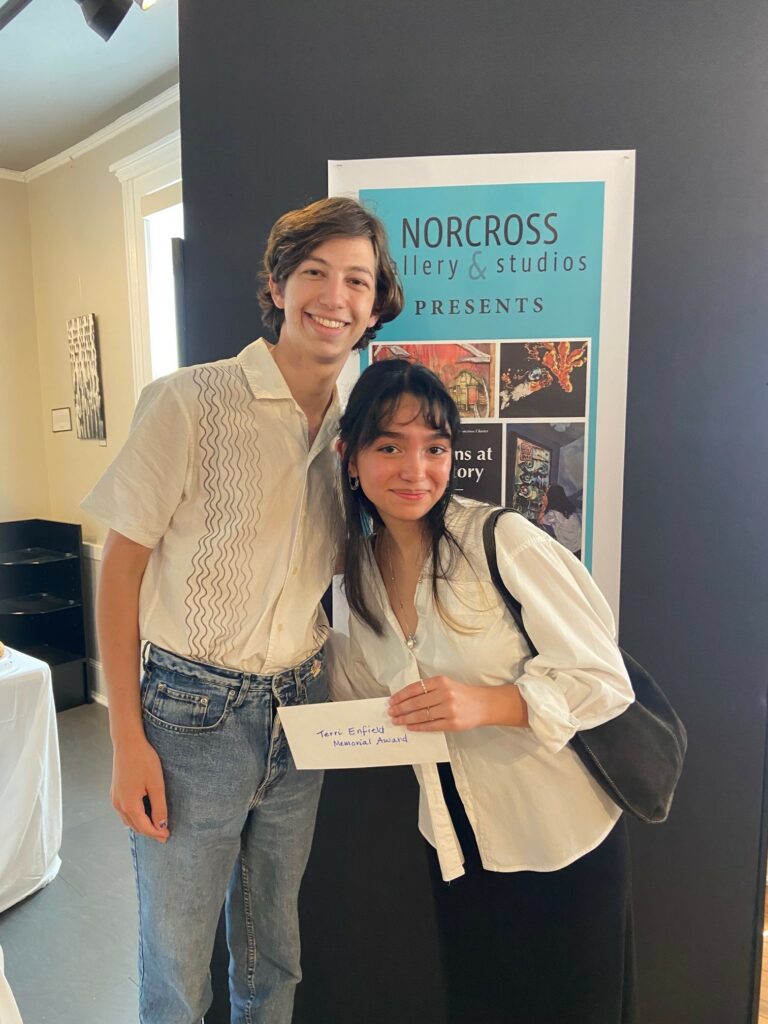
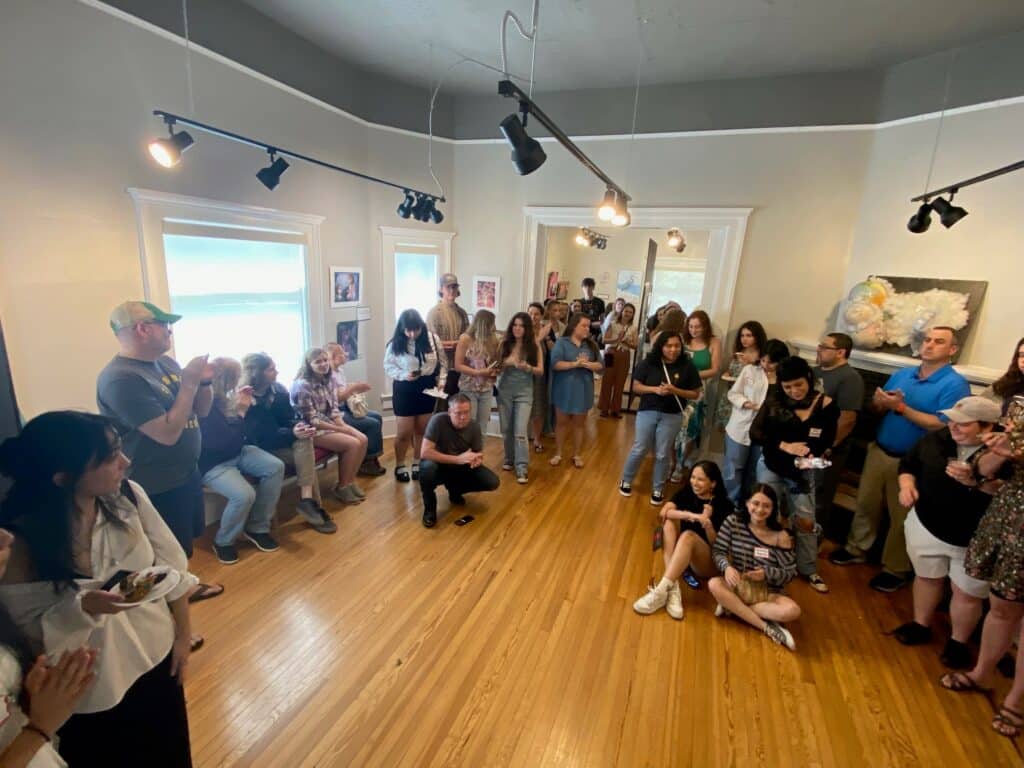
Congratulations to all the student artists.
Students in the second annual Reflections at the Rectory exhibit
Norcross High School:
- Gustavo Benumea-Sanchez
- Maycol Cruz Padilla
- Dorie Liu
- Harlet Martinez Castro
- Paulina Santana
- Gisela Rojas Medina
- Clare Fass
- Ava Netherton
- Ubaldo Diaz
- Katia Navas-Juarez
- Mariah Ingram
- Arisdelcy Juan
- Max Kaiser
- Dani Olaechea
- Christina Bonacci
- Diana Ortiz Ventura
- Katie Yerbabuena-Padierna
Paul Duke High School:
- Adamu Abdul-Latif
- Salma Noor Alabdouni
- Samrin Zaman
- Camryn Vinson
- Liz Damian
- Cecelia Berenguer
- Jasmine Rodriguez
- Angelina Bae
- Dahyana Perez
- Jonah Swerdlow
- Kyra Allicock
- Anni Brown
- Kaleb Fields
- Destiny Jones
- Gabriela Leal-Argueta
- Madisyn Mathis
- Ashley McDonough
- Ahtziri Pinones
- Alondra Valiente-Torres
Related
Arts & Literature
Book, TV and Podcast Recommendations for this Summer
Published
5 months agoon
June 2, 2024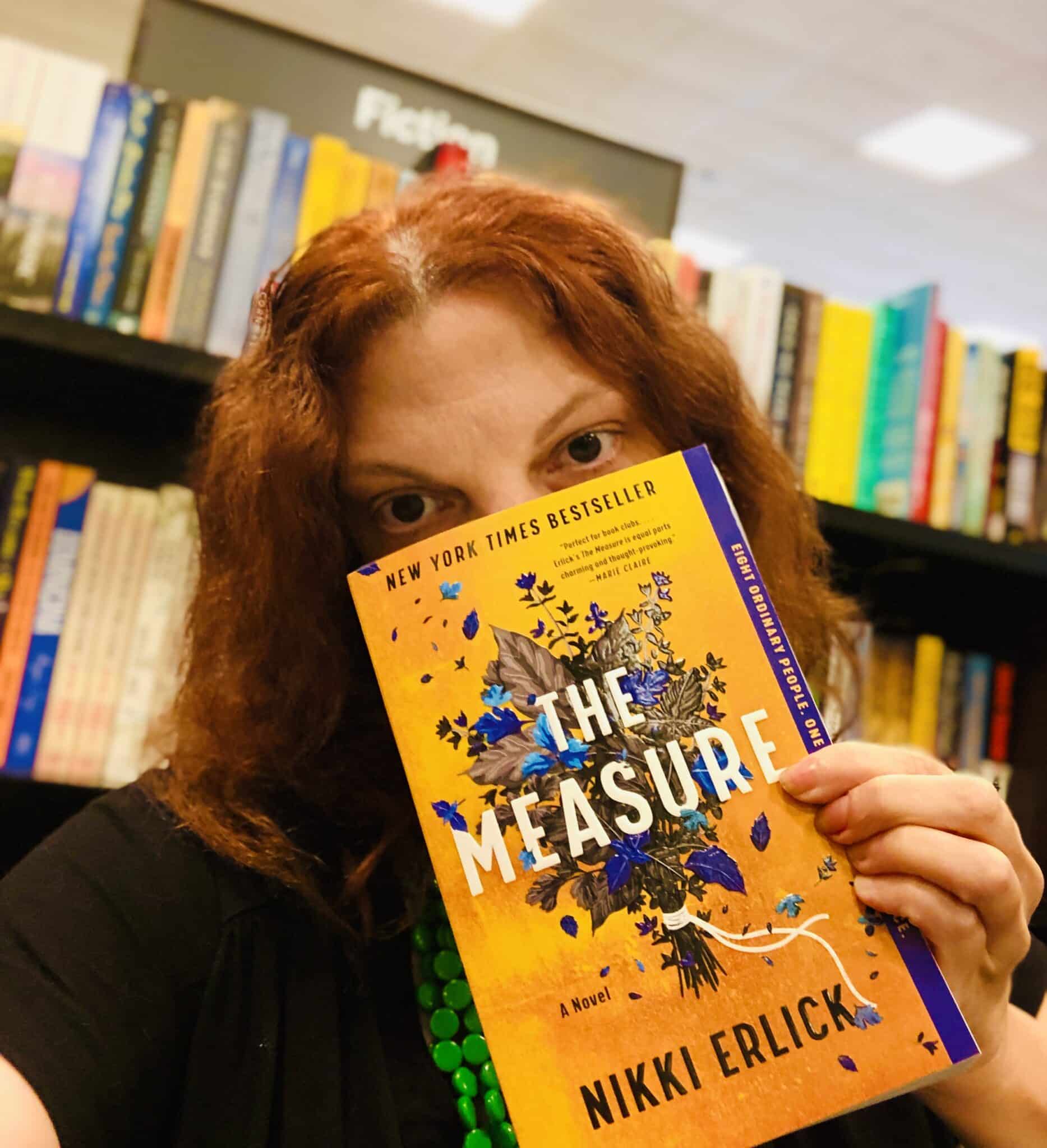
Beat the heat this Summer with a good book, show or podcast. This year, Peachtree Corners Magazine received over 30 recommendations from more than a dozen city residents. There is something for everyone on this list, so let’s dive in.
Machine Made: Tammany Hall and the Creation of Modern American Politics
by Terry Golway
This 400-page book offers readers a comprehensive and insightful exploration of one of the most influential political machines in American history. It provides valuable lessons and perspectives on the intersection of politics, power and society.
Turning Point: The Bomb and the Cold War
Stream on Netflix
This nine-part series offers viewers a thought-provoking exploration of one of the most consequential periods in modern history. It provides deep insights into the complexities of nuclear politics and the enduring legacy of the Cold War.
Fareed Zakaria GPS
Listen on CNN Audio
This podcast comprehensively examines foreign affairs. It enhances a listener’s global awareness, fosters critical thinking and sheds light on complex issues shaping our world today.
— Brian Johnson, City Manager for Peachtree Corners

Empowering Nurses Through Self-care: Unleashing Your Potential and Thriving in the Nursing Profession
by Audrey Boyce
Audrey Boyce offers a practical guide to help nurses find balance and fulfillment in their personal lives and professions. With a comprehensive overview of self-care strategies, this book is essential for nurses looking to recharge, reduce stress and increase job satisfaction.
The Go-Giver, Expanded Edition: A Little Story About a Powerful Business Idea by Bob Burg and John David Mann
The Go-Giver tells the story of Joe, an ambitious young man striving for success. Through Joe’s journey, this book imparts powerful lessons about the significance of giving, collaboration and building meaningful relationships in achieving success.
Special Ops: Lioness
Stream on Paramount+
The protagonist, Joe, attempts to balance her personal and professional life as the tip of the CIA’s spear in the war on terror. The Lioness Program enlists Cruz to operate undercover alongside Joe among the power brokers of State terrorism.
Money and Wealth
Listen on Apple Podcasts
In Money and Wealth, John Hope Bryant provides valuable insights into financial literacy and wealth-building strategies. With a clear and accessible approach, Bryant aims to empower listeners with practical knowledge to achieve financial stability and success.
— Bobby Cobb, CEO of Cobb Global Outreach Inc.
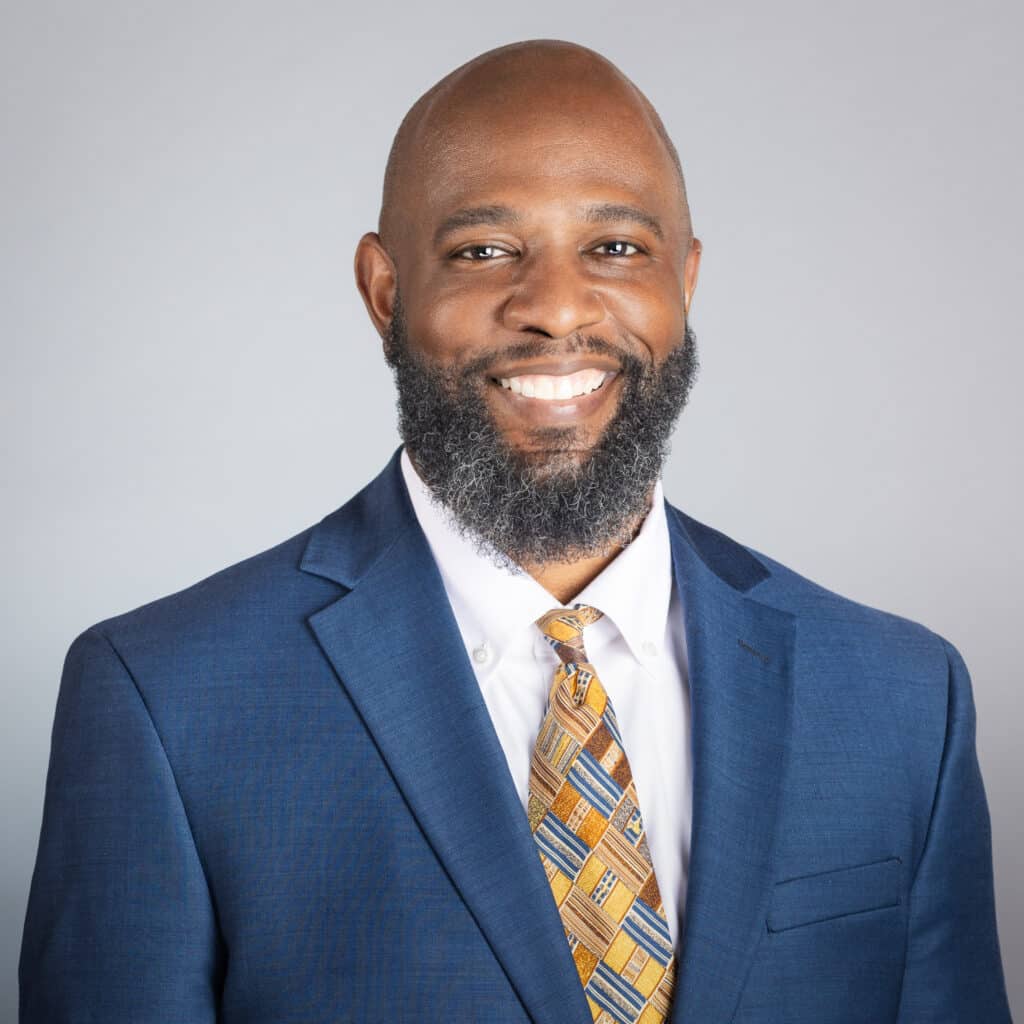
1984
by George Orwell
The new audio drama of George Orwell’s 1984 on Audible is nothing short of phenomenal. With a full cast of film stars and sound effects in stereo, you’ll feel like you’re actually in Oceania, being watched by Big Brother.
— Jill Tew, local author of the forthcoming young adult dystopian novel The Dividing Sky
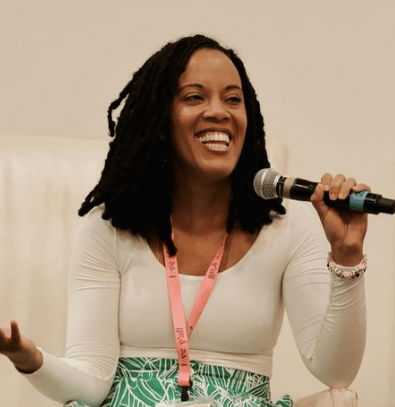
Enter Ghost
by Isabella Hammad
I recently read this and loved the writing. The author plays around with formatting between narrating the story and switching to the format of a play to show the dynamics between characters.
— Ruwa Romman, Georgia State Representative
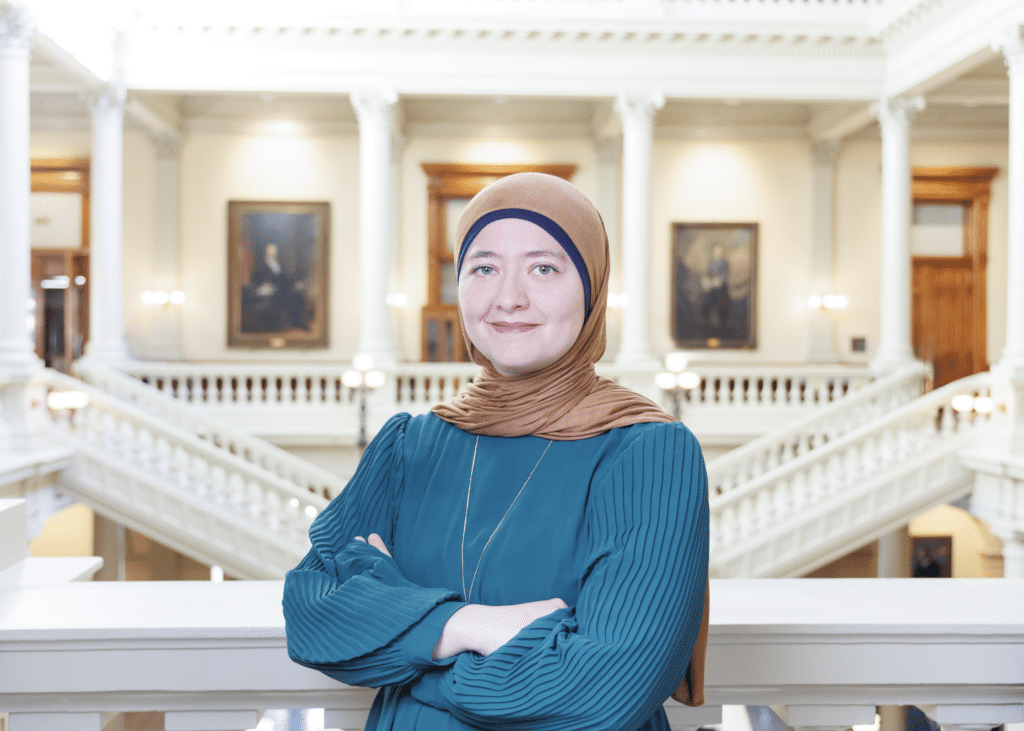
Seeing Eye Girl
by Beverly Armento
Beverly Armento’s account of her life in Seeing Eye Girl is truly remarkable. I was captivated by her story of resilience, strength and, ultimately, forgiveness.
— Erin Griffin, Norcross High School Foundation for Excellence Co-President
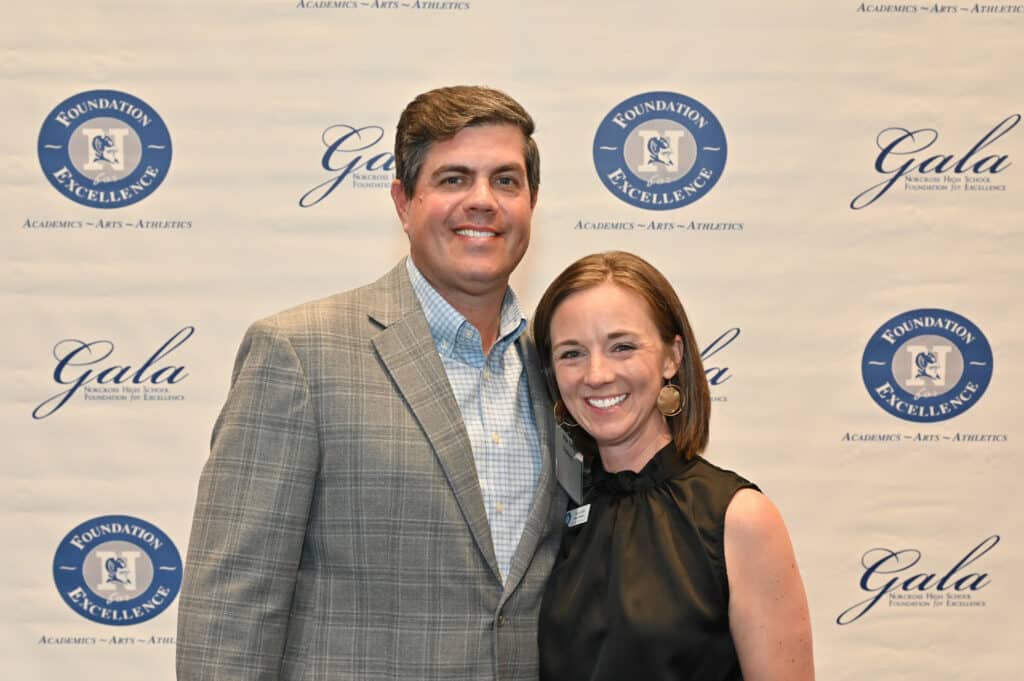
Never Enough: When Achievement Pressure Becomes Toxic – And What We Can Do About It
by Jennifer B. Wallace
This book presents research on how to raise healthy, joyful achievers in a hyper-competitive world. The author was a guest speaker at Greater Atlanta Christian’s (GAC) Parent Partnership Series this year, and we heard about the importance of children knowing that their intrinsic self-worth is not contingent solely upon external achievements.
The Anxious Generation
by Jonathan Haidt
Discover the root causes behind the epidemic of today’s teen mental illness. With compelling data, Jonathan Haidt unveils the decline of play-based childhood and offers practical solutions for a healthier, more fulfilling upbringing. We have asked GAC faculty to add this to their personal summer reading list.
— Dr. Scott Harsh, President of Greater Atlanta Christian School
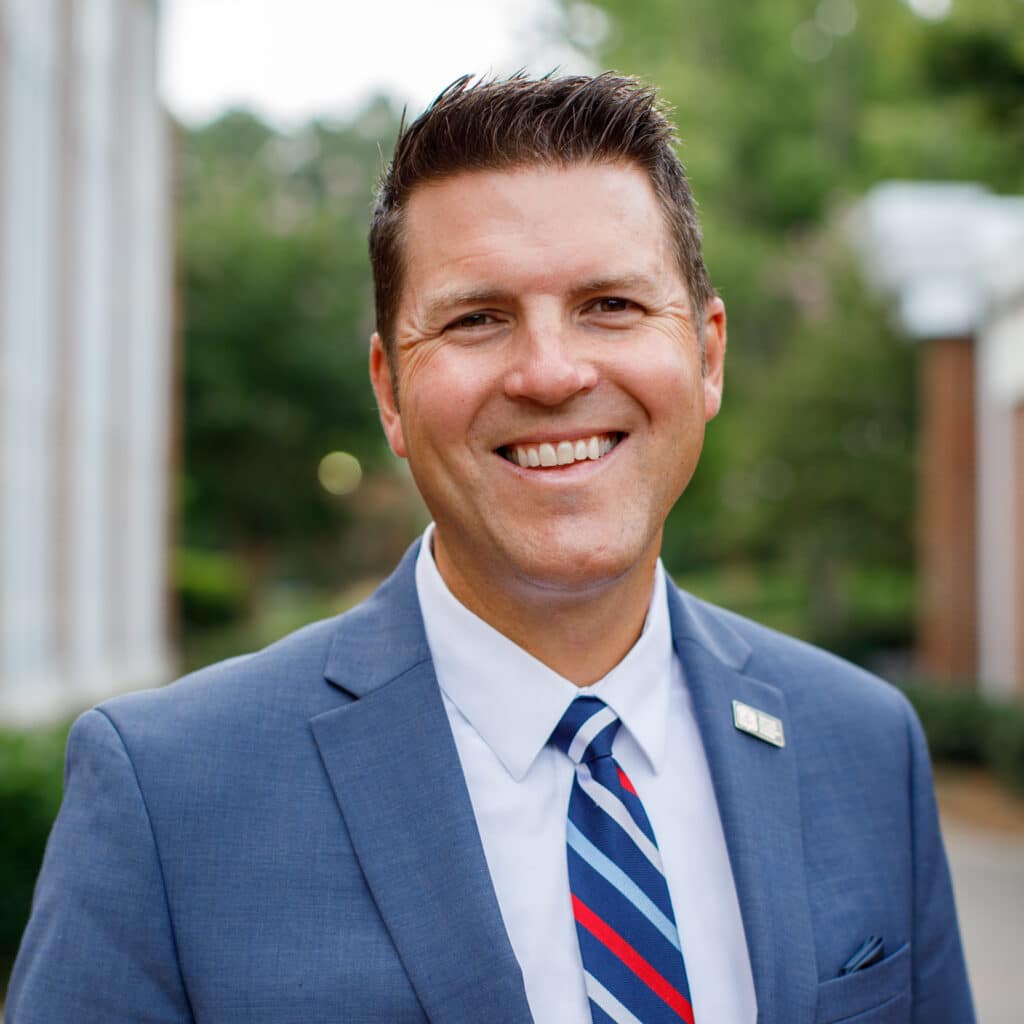
Glad You’re Here
by Craig Cooper and Walker Hayes
Glad You’re Here tells the true, redemptive story of country music singer Walker Hayes and his unlikely friendship with pastor Craig Cooper. In alternating chapters, each individual shares their unique perspective on pivotal moments in their friendship, and the book reminded me to prioritize the patient and persistent cultivation of community.
— Ann Cousins, Communications Director and Wesleyan School
The Boredom Experiment
Listen on Apple Podcasts
The Boredom Experiment, hosted by Jeremy and Ashley Parsons, is a short, heartfelt podcast series that documents and explores the effect of removing digital distractions and social media from their family’s lives for a year.
Over eight episodes, they share their experiences and insights into how this experiment impacts their creativity, relationships and overall well-being. The Parson’s storytelling thoughtfully weaves together interviews, music and their musings in such a creative, personal way that makes it an absolute delight to listen to.
The 1000 Hours Outside Podcast
Listen on Apple Podcasts, Spotify and Youtube
Digital Minimalism
by Cal Newport
Digital Minimalism advocates for a thoughtful and intentional approach to technology use. Newport argues that constant connectivity and digital distractions hinder productivity and well-being and encourages individuals to choose tools and habits that align with their values and long-term goals. In a digitally crowded world, this book was a needed reminder to be intentional with my time and strategic with how I use technology.
— Natalie Dettman, Creative Director at Wesleyan School
Sideline C.E.O.
by Marty Smith
While on this surface this book offers great wisdom from some of the most successful coaches of our time, it also provides a behind-the-scenes look at the lives of many people we admire.
From learning about Greg Sankey figuring out how to lead the SEC through Covid as he sat on his front porch to Mack Brown processing through how to lead his football team through racial tensions at UNC, you realize that these men [and women] are normal human beings that face the same difficult choices as the rest of us.
Not to mention, Marty Smith captures the lives and insight of these coaches in a fun, compelling way!
Practicing the Way
by John Mark Comer
New Kid
by Jerry Craft
Where Do We Go from Here
by Martin Luther King Jr.
— Joseph Antonio, Middle School Principal at Wesleyan School
West with Giraffes
by Linda Rutledge
This is lightly based on a true story. It is the story of moving giraffes who survived a hurricane, were rescued in the Atlantic, and were carried cross-country to the San Diego Zoo. It is well-written, and the character development is fantastic.
Crossing the country with two giraffes during the Depression created excitement in all the small struggling areas. The joy of those who had never dreamed of seeing a giraffe in real life will bring joy to anyone reading this book.
Housewives of True Crime
Listen on Apple Podcasts and Youtube
Moms and Mysteries
Listen on Apple Podcasts, iHeart Radio and Spotify
Southern Fried Crime
Listen on Apple Podcasts and Youtube
Wiser than Me with Julia Louis-Dreyfus
Listen wherever you get your podcasts
— Nancy Minor, The Nancy Minor Team
The Women
by Kristen Hannah.
A great read about the Army nurses in Vietnam.
— Laurie Rogers, The Nancy Minor Team
In The Woods
by Tana French
This book is a real page-turner. The author is a gifted writer, so even though it is a crime thriller, it reads like a novel. There are six books in the series, and I have read all of them.
Casefiles
Listen on Apple Podcasts and Spotify
This is a true crime podcast that has been around for several years. The stories are detailed and very interesting and cases are examined from all over the world.
— Shameka Allen, MBA, MA, CEO of Good Samaritan Health Centers of Gwinnett
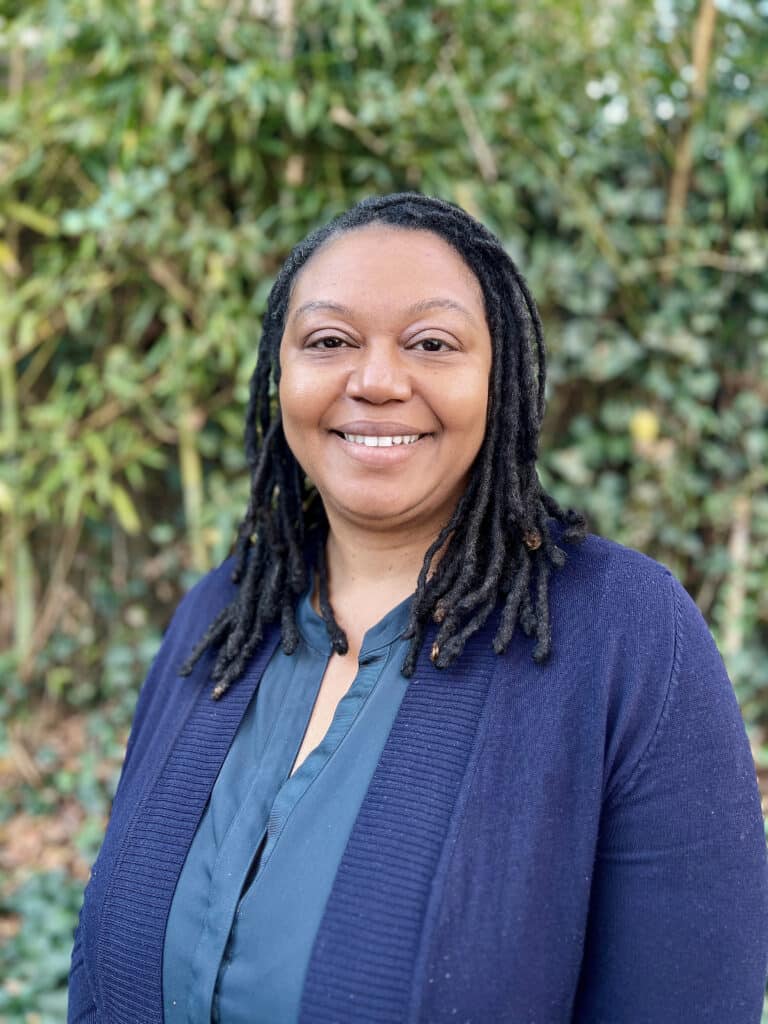
Over the Edge of the World
by Laurence Bergreen
Over the Edge of the World is a captivating account of Magellan’s expedition around the world. We all know Magellan’s name but few of us know the rich details behind the adventure and how it unfolded. I was inspired by the courage and bravery of those who took part in the great Age of Exploration.
Arrested Development
Stream on Netflix
This is easily one of our favorite shows. My wife, Meredith, and I have watched and re-watched it so many times and still find it so hilariously funny. The show blends clever writing with quirky characters and intricate, running gags. There’s always money in the Banana Stand!
Dr. Death
Listen on Apple Podcasts, Spotify and Wondery
This gripping true-crime podcast explores the shocking story of a dangerous surgeon. It’s a must-listen for its compelling narrative, deep investigative journalism and critical insights into medical malpractice and systemic failures. The podcast has since been made into a limited streaming TV series.
— Scott Hilton, Georgia State Representative
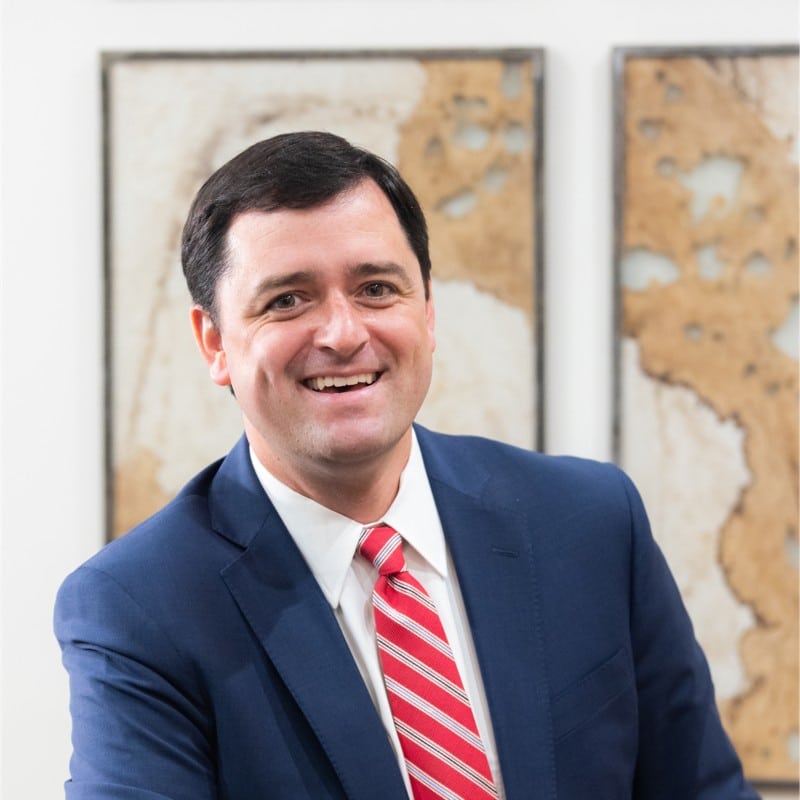
Sleep Wrecked Kids
by Sharon Moore
This book explains how inadequate sleep affects children’s growth, development and learning. This is a great guide to creating better sleep routines.
Healthy Sleep Happy Kid
by Meghna Dassani
This quick, easy read offers valuable insights into how sleep impacts a child’s health. It provides practical tips for improving your child’s sleep environment and habits and is a go-to resource for parents aiming to enhance their child’s sleep and overall wellness.
I can’t overstate the importance of good sleep habits for the overall well-being of your child and the entire household. Quality sleep is the foundation for happy, healthy kids and stress-free parents, setting the stage for the best possible summer with your family.
— Dr. Gia Grannum, Board Certified Pediatric Dentist of Agape Pediatric Dentistry
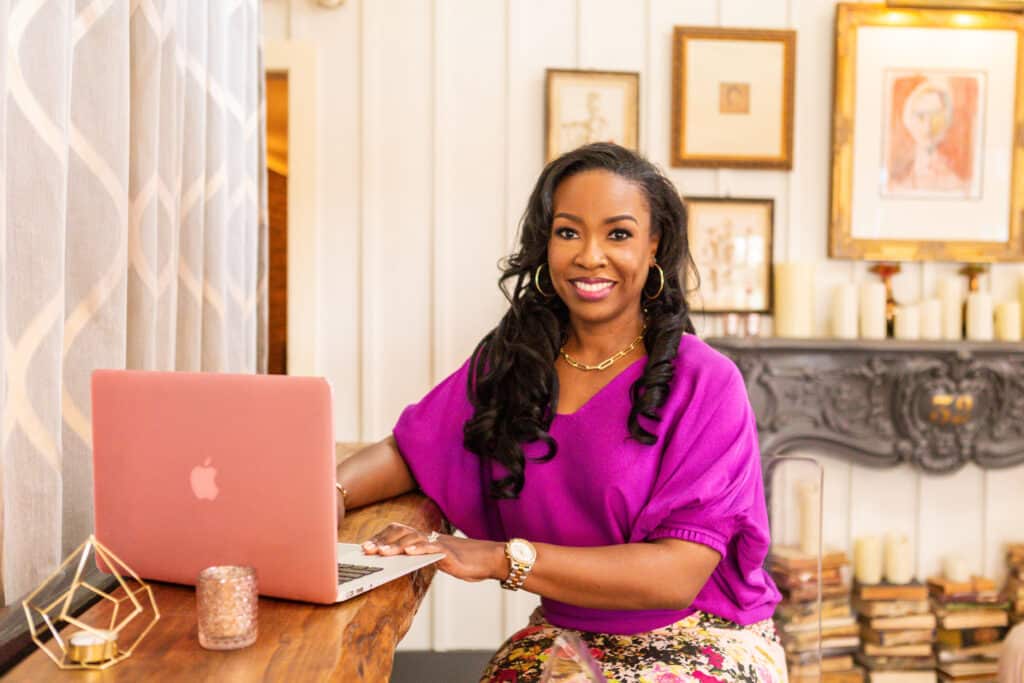
The Measure
by Nikki Erlick
I recommend The Measure by Nikki Erlick, which is about to come out in paperback! It’s a great pick for summer reading or a book club!
Poured Over, the Barnes & Noble Podcast
Stream on the Barnes & Noble website and Apple Podcasts
Check out the Poured Over podcast for interviews with your favorite authors, book recommendations for your TBR pile and more.
— Amanda Couch, Assistant Manager at Barnes & Noble at The Forum
Want even more recommendations? Check out last year’s list here.
Related
Read the Digital Edition
Subscribe
Keep Up With Peachtree Corners News
Join our mailing list to receive the latest news and updates from our team.
You have Successfully Subscribed!

TransPak Acquires Reid Packaging to Expand East Coast Presence

Peachtree Corners City Leaders Engage Residents on Land Use Development

The NOW Massage Opens Peachtree Corners Boutique at The Forum

GCPL Accepting Applications for Next New Start Entrepreneurship Incubator

Ruwa Romman’s Re-Election Bid: Addressing Housing, Taxes and Transportation in Gwinnett [Podcast]

Councilmember Sadd to Host Town Hall Meeting on October 29

PTC Arts Inc. Furthers Mission to Provide Accessible Art

From Corporate to Sci-Fi Author: Jill Tew Discusses ‘The Dividing Sky’ [Podcast]

From Corporate to Sci-Fi Author: Jill Tew Discusses ‘The Dividing Sky’ [Podcast]

PTC Arts Inc. Furthers Mission to Provide Accessible Art

Councilmember Sadd to Host Town Hall Meeting on October 29

Ruwa Romman’s Re-Election Bid: Addressing Housing, Taxes and Transportation in Gwinnett [Podcast]

GCPL Accepting Applications for Next New Start Entrepreneurship Incubator

TransPak Acquires Reid Packaging to Expand East Coast Presence

The NOW Massage Opens Peachtree Corners Boutique at The Forum

Peachtree Corners City Leaders Engage Residents on Land Use Development

Light up the Corners [Video]

Capitalist Sage: Business Leadership in Your Community [Podcast]

Cliff Bramble: A Culinary Adventure through Italy

Top 10 Brunch Places in Gwinnett County

A Hunger for Hospitality

THE CORNERS EPISODE 3 – BLAXICAN PART 1

Top 10 Indoor Things To Do This Winter

The ED Hour: What it takes to Remove Barriers from Education
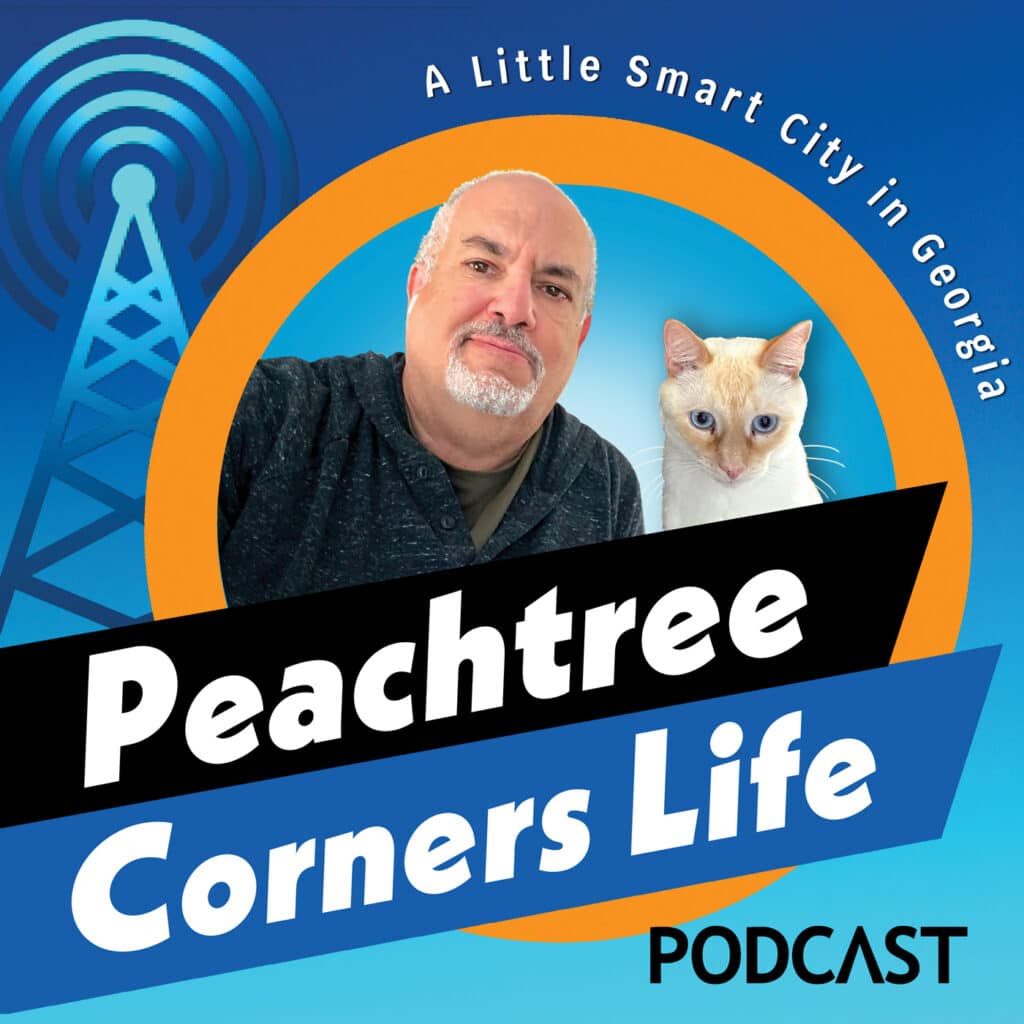
Peachtree Corners Life
Topics and Categories
Trending
-
Business1 week ago
TransPak Acquires Reid Packaging to Expand East Coast Presence
-
Health & Wellness1 week ago
The NOW Massage Opens Peachtree Corners Boutique at The Forum
-
Community5 days ago
GCPL Accepting Applications for Next New Start Entrepreneurship Incubator
-
Peachtree Corners Life4 days ago
Ruwa Romman’s Re-Election Bid: Addressing Housing, Taxes and Transportation in Gwinnett [Podcast]




